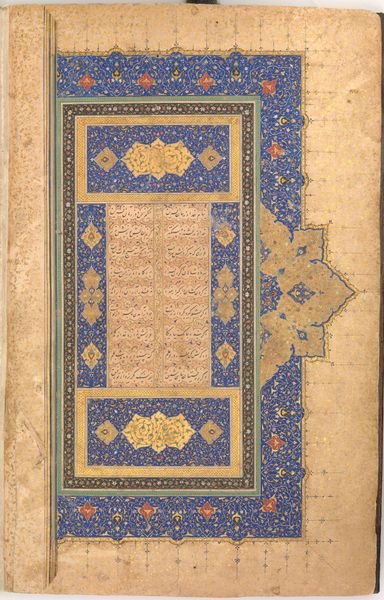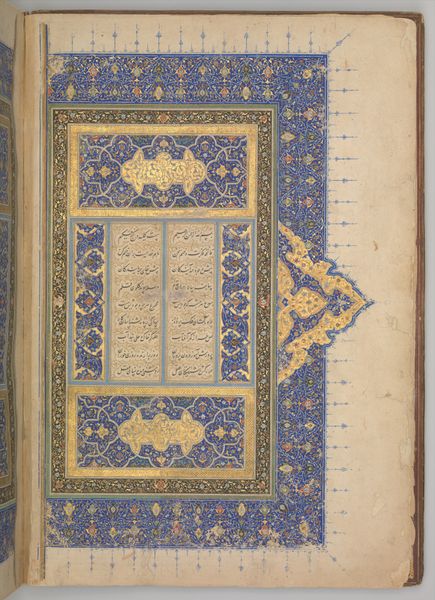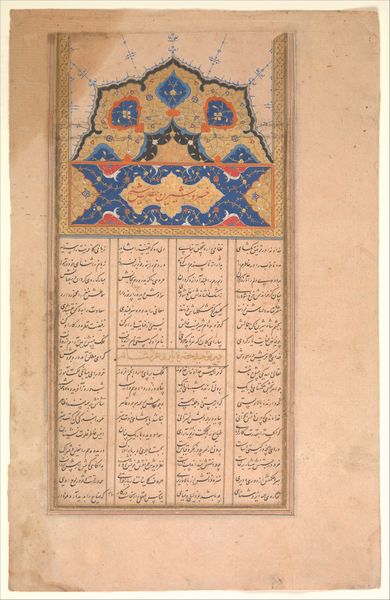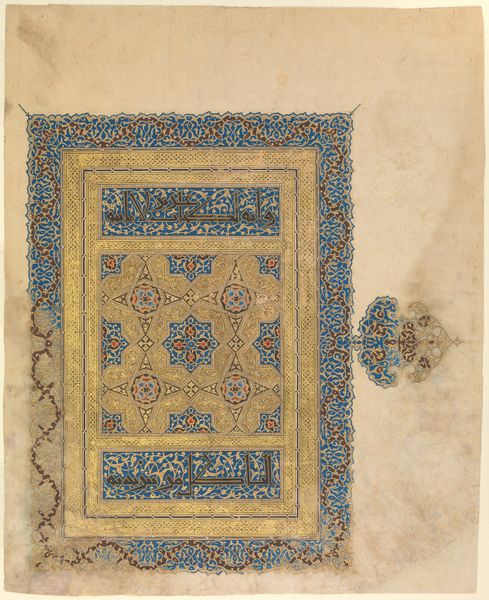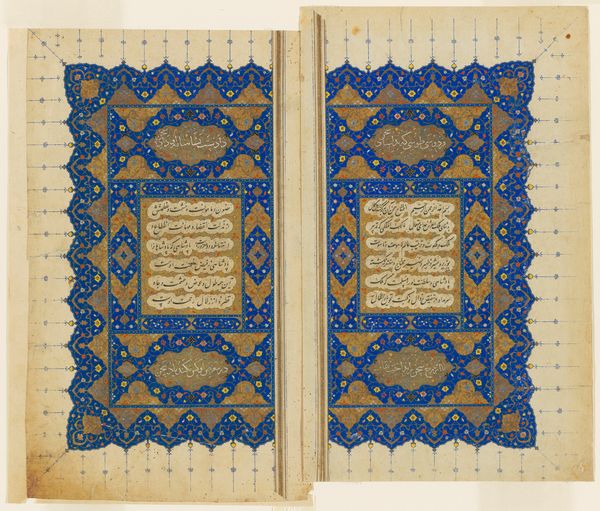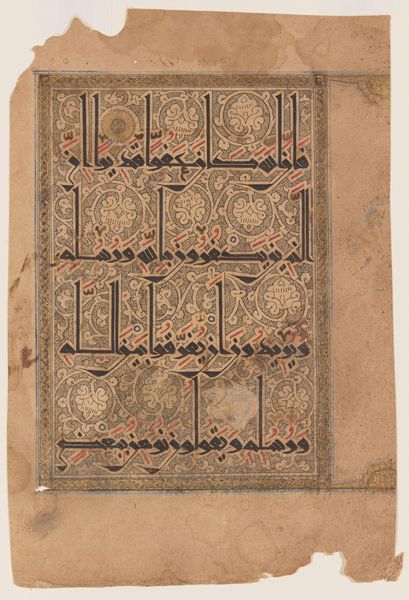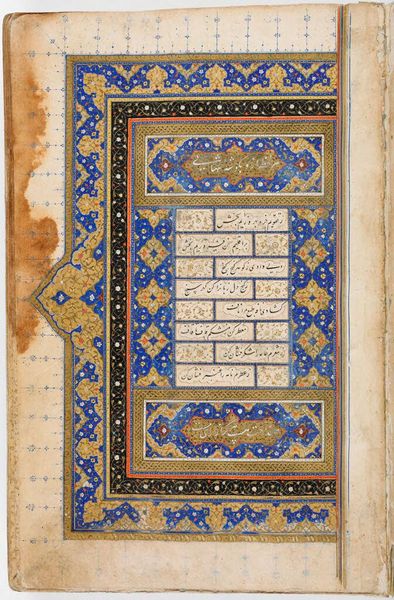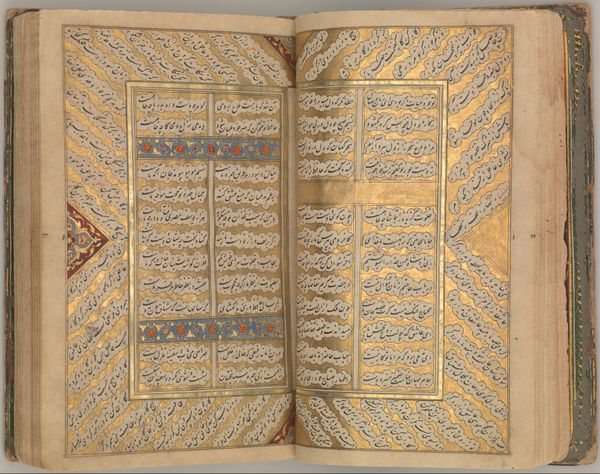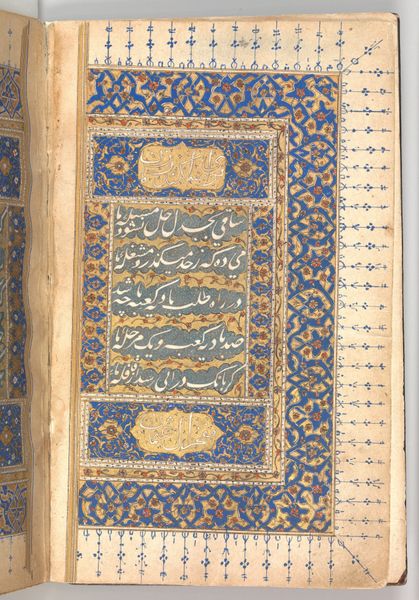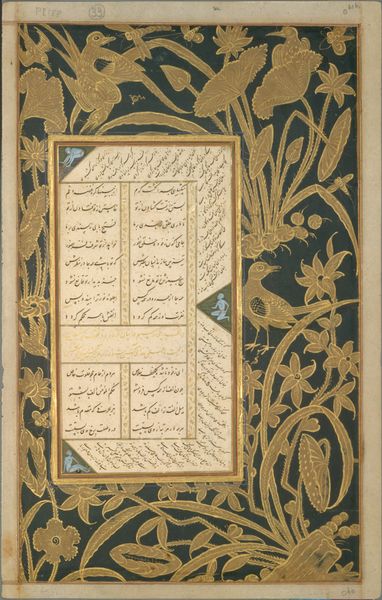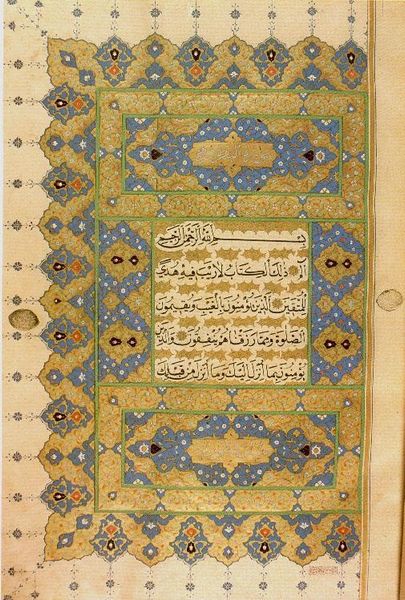
drawing, paper, ink
#
drawing
#
paper
#
ink
#
islamic-art
#
miniature
Dimensions: H. 11 1/2 (29.2 cm) W. 7 in. (17.8 cm)
Copyright: Public Domain
Curator: Before us, we have an exquisite illuminated page from a manuscript of the Khamsa—that's the "Quintet"—of Nizami of Ganja. This artwork, dating from around 1484 to 1535, employs ink, opaque watercolor, and gold on paper and it currently resides at the Metropolitan Museum of Art. Editor: Oh wow. It's... hypnotically beautiful, isn’t it? That deep, rich blue against the aged paper gives it such a soulful feel. It reminds me of a starry night, you know, if Van Gogh decided to illustrate a book instead of painting cypress trees. Curator: That’s an interesting analogy! This is part of a larger manuscript tradition where the visual ornamentation amplifies and interprets the text, reflecting the philosophical and spiritual underpinnings of Nizami’s poetry. Think of it as an active dialogue between text and image, deeply intertwined with socio-political meanings. Editor: So, like, the border isn't just decoration? I see the floral and geometric patterns, really intricate. It must have taken ages! It gives a structure to the central text like the design echoes and magnifies what the poetry expresses? Curator: Precisely. The patterns, color choices, and the very layout of the page served to reinforce the content and its ideological context within a specific historical moment. In this era and region, the arts were highly entwined with courtly patronage. Editor: Courtly patronage… It's mind-blowing to think that something so meticulously crafted was meant for private eyes of privileged rulers rather than broad exhibition and engagement of current eras. Looking at this now, I find myself pondering what stories and perspectives aren't made visible to me now as well. It also prompts a question of responsibility of current generation: what stories should *we* spotlight today, and make them available to general public in future. Curator: Those questions are vitally important when considering how we frame these artworks today, whose stories get told, and how power shapes those narratives. We are not just conserving objects; we are interpreting their legacies. Editor: True, and in so doing, helping reshape the legacies too. The details of the intricate craftsmanship are inspiring as it tells more significant narratives across geographies and social landscapes and history.
Comments
No comments
Be the first to comment and join the conversation on the ultimate creative platform.
